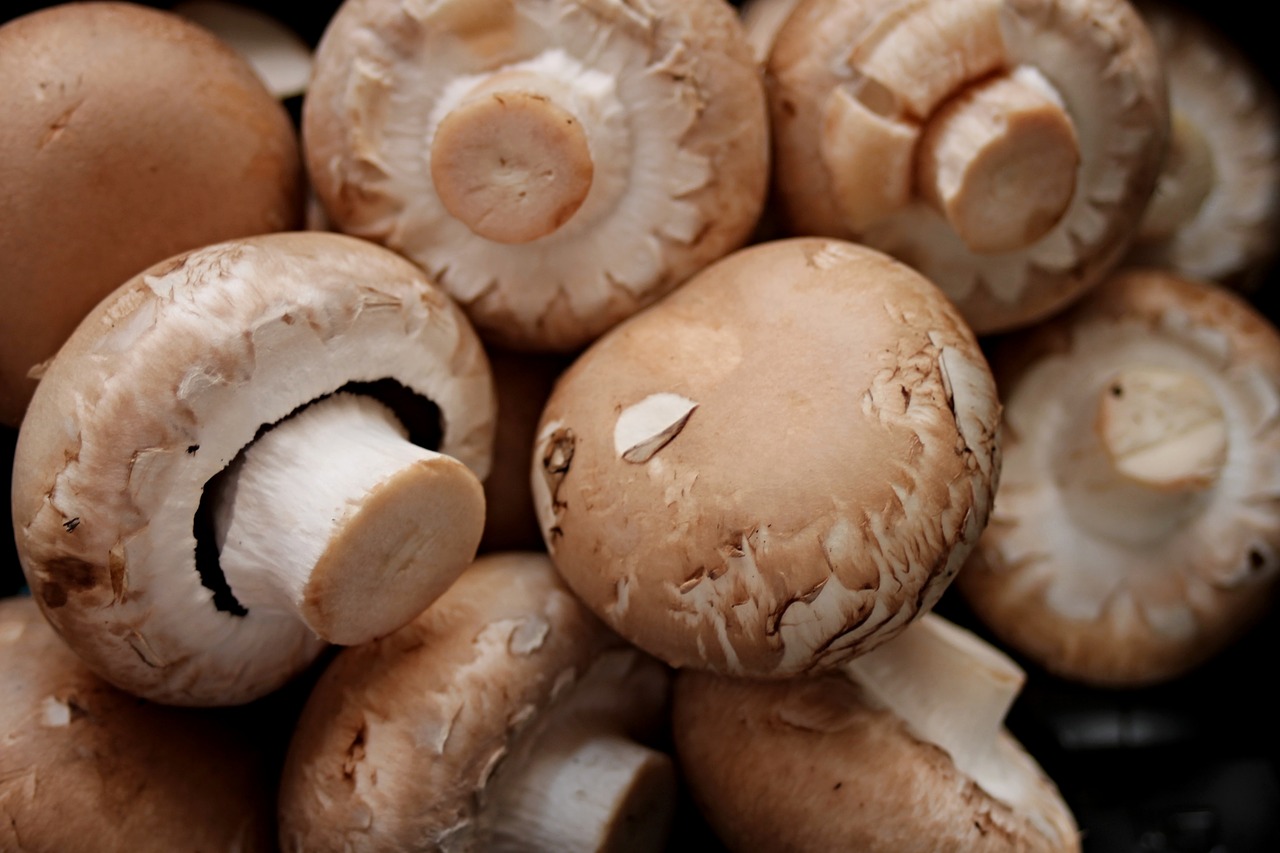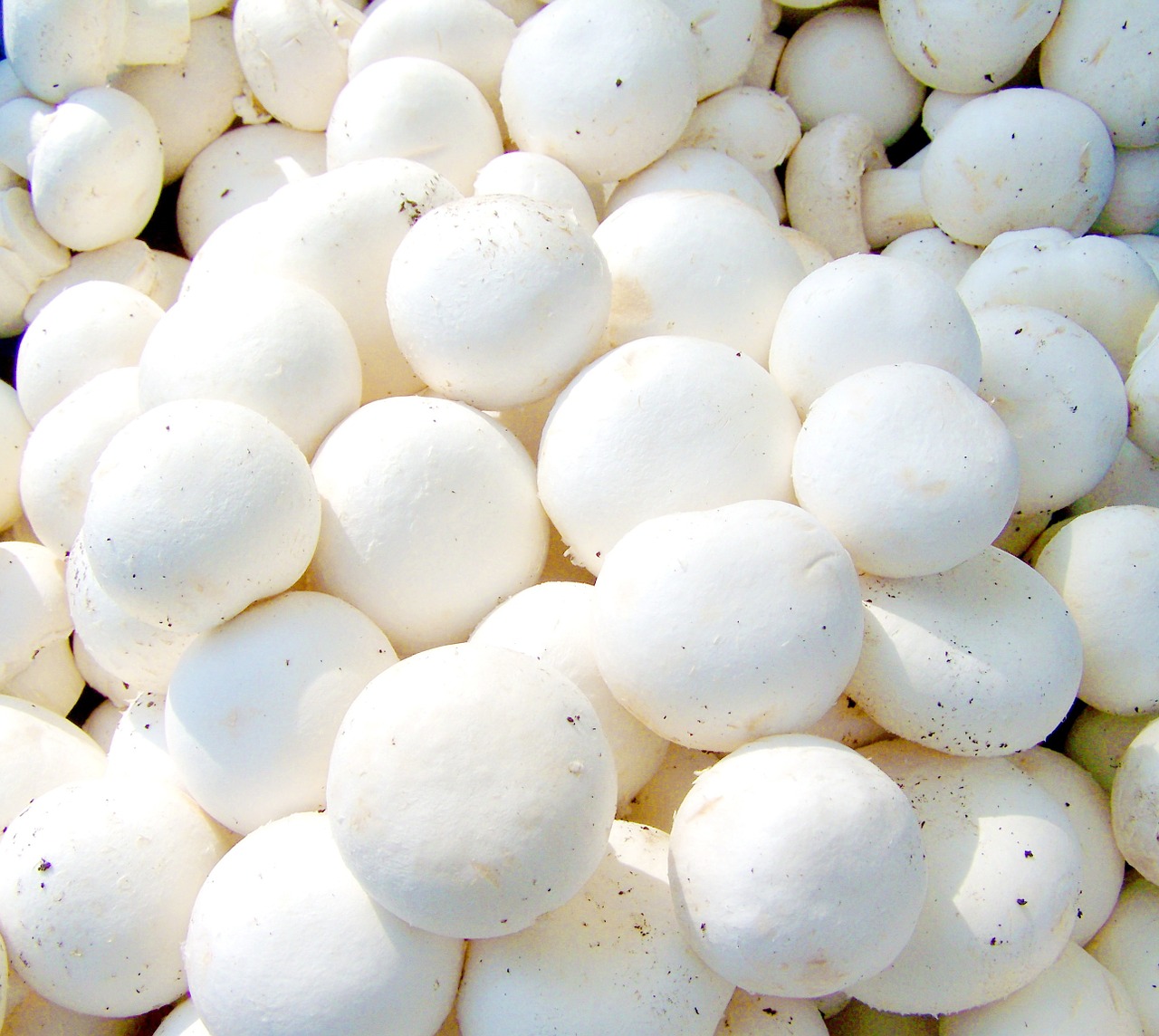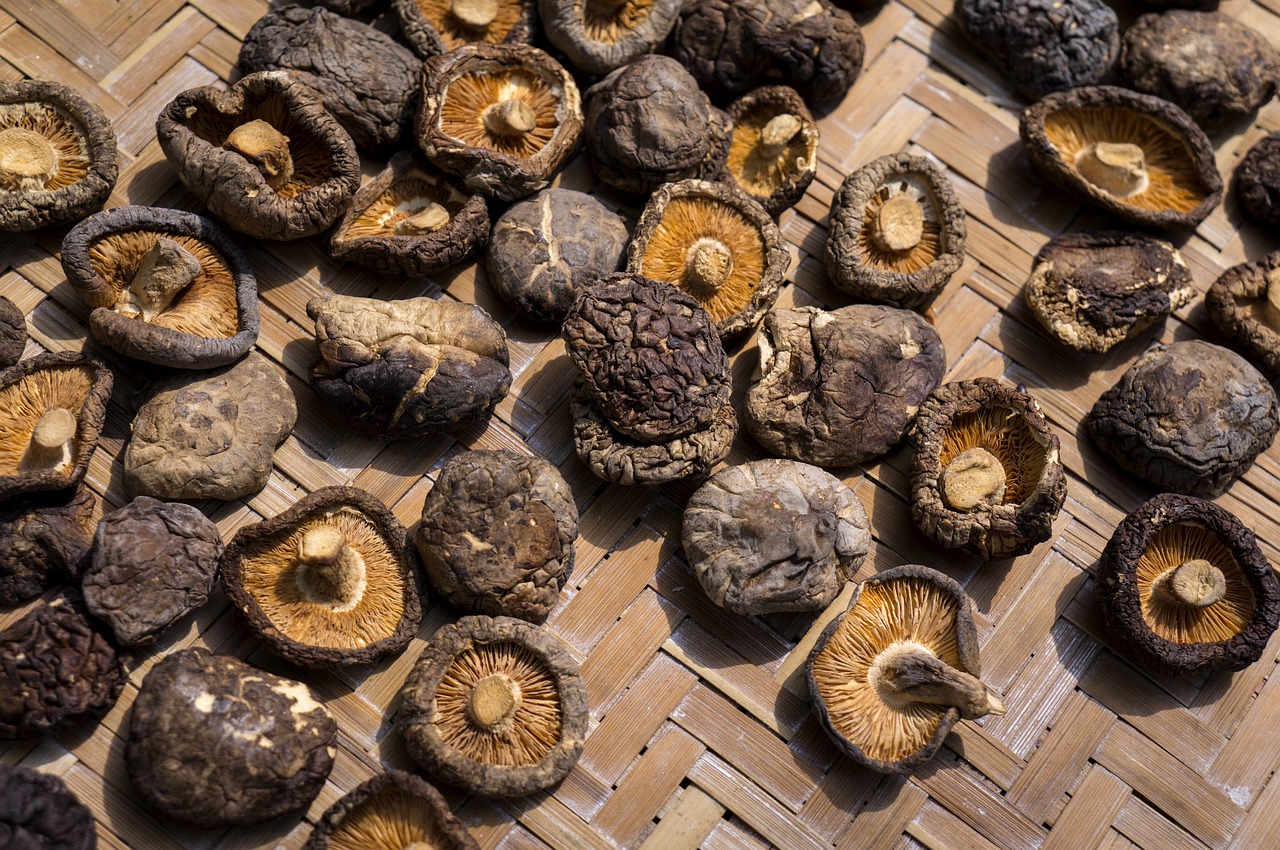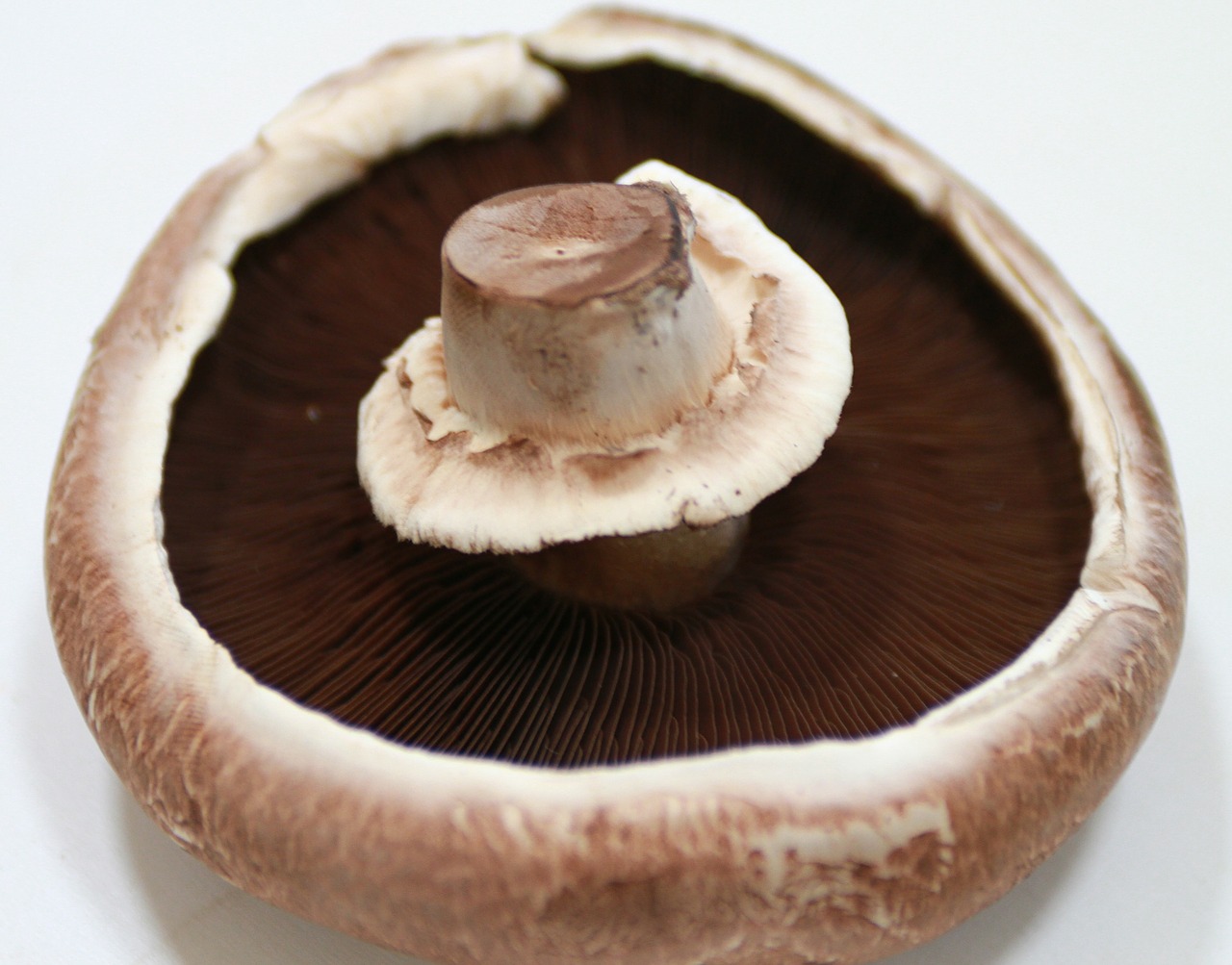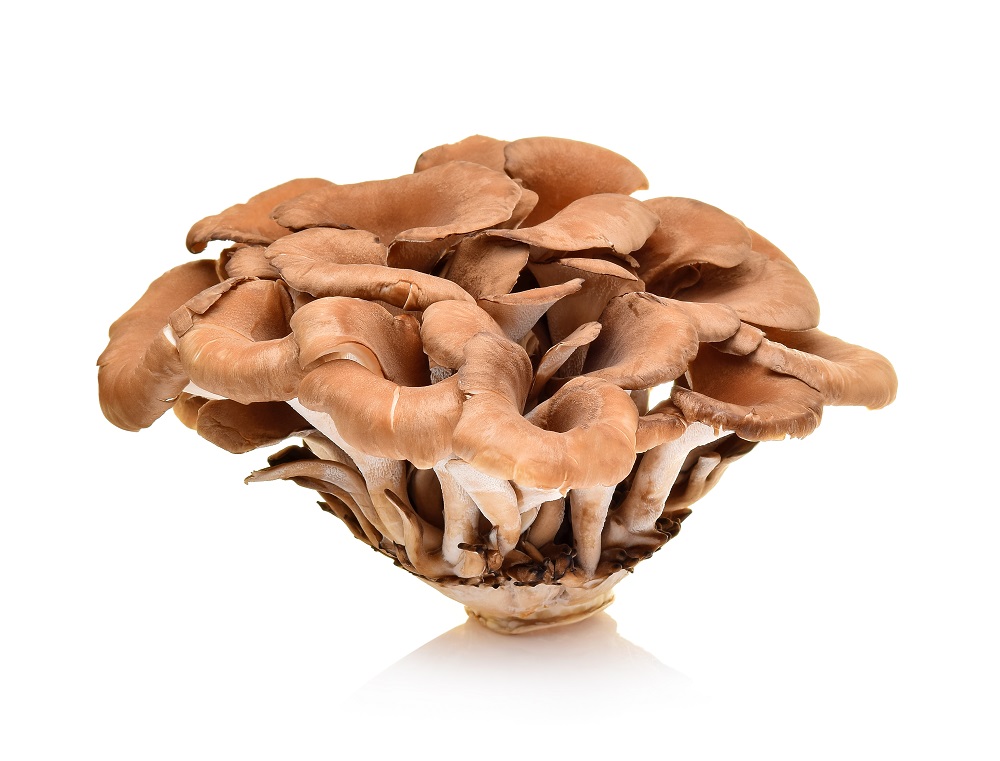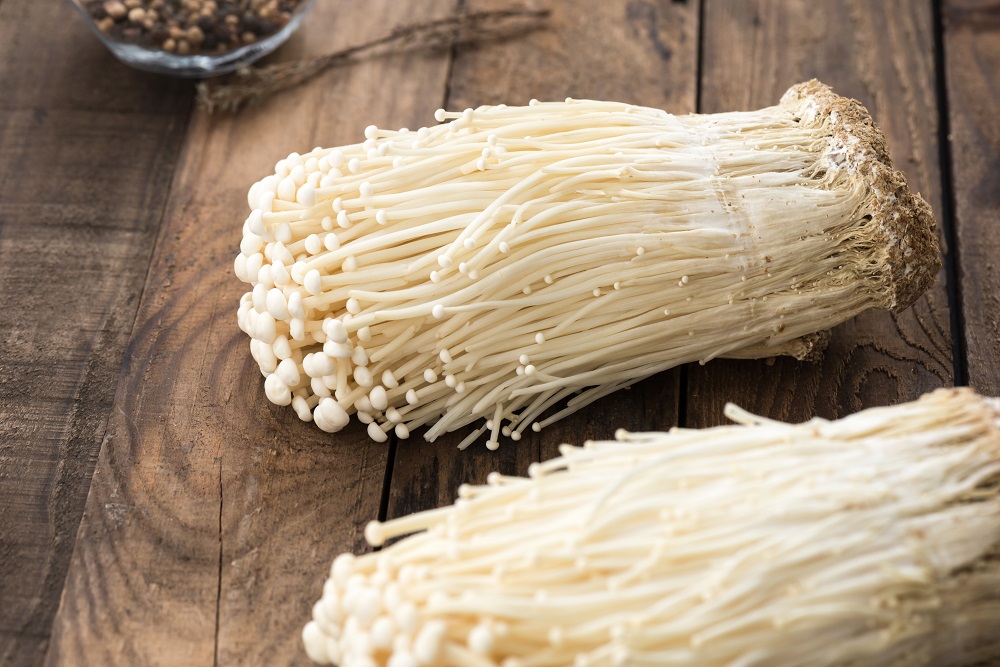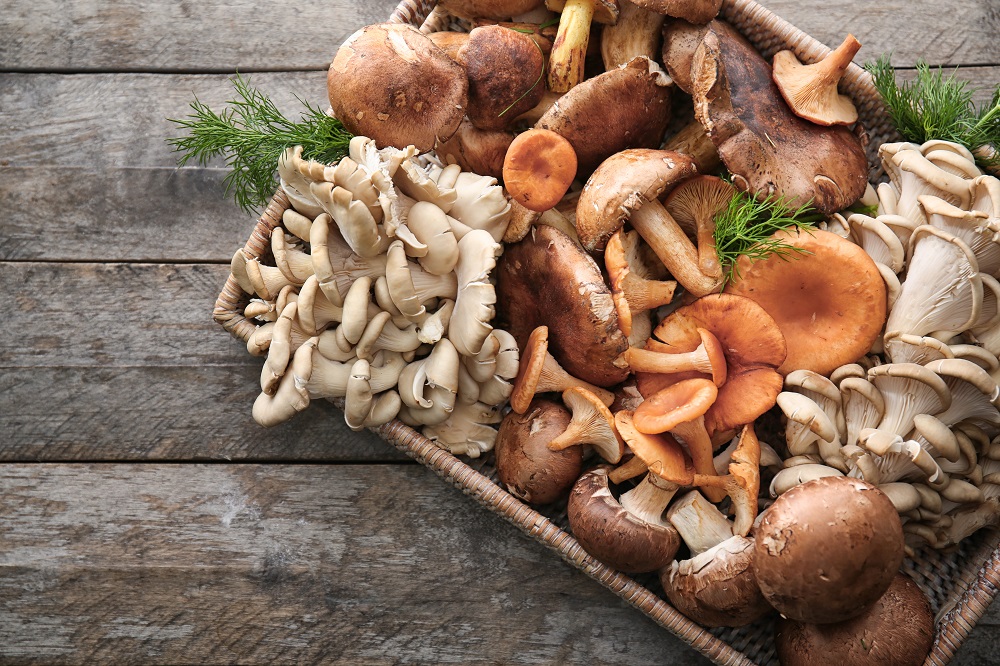
Mushrooms, otherwise known as toadstools, are the flesh-like part of a fungus. They are the spore-bearing fruiting parts of the fungus and are seen above the ground or on the soil. Mushrooms come in different shapes, sizes, and colors.
Some mushrooms are very healthy for you, and some can also be very toxic, with poisonous qualities. However, the healthy ones are known to be used vicariously in different cuisines, notably used in Korean, Chinese, Japanese, and European cuisines.
You have a wide range of mushrooms which you can choose from- depending on their taste and how you would use them in different recipes for your food- just avoid the scary-looking ones.
What are the Different Types of Mushrooms?
As mentioned before, there is a wide range of mushrooms, and they are used in different ways. The types include the following:
1) Cremini Mushroom
Also known as “Baby Bellas,” or the “Golden Italian mushrooms,” these mushrooms are recognized for their dark, firm color and a punch full of flavor. They have a nice round head with a brown hue and can be used in different recipes, which complement their ruddy flavor.
2) White Button Mushroom
This type is one you must have seen a lot in different food outlets and canned in various supermarkets. It has a very light flavor, and it can be eaten in various ways; on pizzas, in different kinds of pasta, and in soups as well. Synonymous to its name, it is shaped like a round white button and is odorless.
3) Shiitake Mushroom
Shiitake mushrooms are common in East Asia, and the name itself is Japanese for “oak fungus.” Aside from being used in food, shiitake mushrooms are also known for their medicinal properties. Shiitake mushrooms are indicated by their umbrella-shaped brown caps and their earthy flavor- with hints of wood and nature itself. They are used in recipes like Beef Shiitake and Sauteed Shiitake mushroom.
4) Portobello Mushroom
These mushrooms are popular in Italian cuisine. They are the older mature form of criminis with a flatter cap. They have a fleshy and meaty texture, and you can use them without integrating any other ingredient- they’re delicious as it is! They are used in different sauces and as meat substitutes. If you are vegan, this mushroom will be an amazing choice for you to integrate into your diet.
5) Maitake Mushroom
Maitake mushrooms are also known as the “Hen of the Wood,” and they look like an imitation of cabbages. They have earthy brown centers and are outlined with a darker brown. They also have a meaty odor and are native to Japan and northwestern America. They can be used in white rice salads, and they can also be seared and sauteed. They’re very dynamic, and you can use them however you like!
6) Oyster Mushroom
They are mostly found in the wild but are also cultivated and sold in various stores and restaurants. Like oysters, they have an oval or slightly triangular shape and are placed together in bunches. With white and brown hues, they have an intricate smell and taste and can be used in stir-fries and soups. These mushrooms are absolutely delicious and will give life to your cooking.
7) Enoki Mushroom
Enoki mushrooms are famously used in Japanese cuisine and are known as “enokitake.” These mushrooms gained social media popularity with the rise in the trend of “Mukbangs” because of their crunchy texture and fresh taste. They are also used in ASMR videos. In appearance, they are long and stringy and have small caps with white color. Enoki mushrooms are eaten raw but can also be served with Gochujang, which is a spicy Korean sauce. This combination is quite famous.
What should You Look for in Mushrooms before Buying them?
When you are in the store for mushrooms, be careful and select fresh mushrooms that are dry, firm, and are not bruised. If mushrooms appear mucous or droopy, avoid them!
You should always store them in the refrigerator and prepare them whenever you use them in any of your cooking. Keep in mind that not every mushroom will be to your liking, so always do your research and make sure you like what you are going with.
Mushroom’s Nutritional Value & Health Benefits
If we look at the components of mushroom, it is a constituent of ninety-two percent water, four percent carbohydrates, two percent protein, and less than one percent fat.
This means they are incredibly healthy, and you can eat as much as you like without worrying about extra calories!
Anyone can indulge in mushrooms. They are fat-free, low in sodium, and cholesterol-free. Moreover, they are filled with fiber, vitamins, and minerals. You will not have to worry about consuming these because they have no negative side effects. However, the nutritional benefits do vary in different types of mushrooms.
Other than that, mushrooms are packed with essential minerals and vitamins. These are listed in detail below:
1) Vitamin D
Mushrooms are rich in Vitamin D. This vitamin is important in keeping our bones, teeth, and muscles healthy. They also manage the levels of calcium and phosphate in our bodies.
2) Antioxidants
Antioxidants prevent cancer and other heart diseases. They prevent the damage that is caused by oxidants on your cells, and they also boost your immune system. Antioxidants are also good for your skin and hair. The most common antioxidant present in mushrooms is selenium, and it helps prevent skin cancer.
3) Phosphorus
Mushrooms have a moderate amount of phosphorus. Phosphorus keeps the bones, teeth, and kidneys healthy. Isn’t it amazing that one little mushroom helps boost all the good elements in your body?
4) B vitamins
B vitamins are a type of water-soluble vitamins that are very important for your cells and their regenerations, as well as the synthesis of red blood cells. Mushrooms contain B vitamins by the names of; niacin, riboflavin, and pantothenic acid. These three promote heart health, are good for the nervous system, and promote the production of necessary hormones.
5) Copper
Like the B vitamins, copper also helps make the body make red cells, and this promotes the flow of oxygen around the body. Copper also maintains healthy bones and nerves. Mushrooms can deliver all this to you in one serving.
6) Potassium
Potassium is an electrolyte that is also one of the most important minerals in your body. Potassium regulates your fluid balance, the muscle contractions in your body, and the nerve. It also reduces blood pressure and protects one against strokes. Portobello mushrooms are rich in potassium, and a two-thirds cup can be equivalent to the potassium levels of a banana.
Why should You Integrate Mushrooms into Your Diet?
From the components of mushrooms mentioned above, you can see just how beneficial they are to eat. From prevention of cancer, different diseases, and promotion of your facial health, it seems like a treasured food. Written below in greater detail are reasons why you should integrate mushrooms into your diet;
Mushrooms have a rich antioxidant content which may help prevent different cancers like; prostate, lung, breast, and other types. This has been presented by the National Cancer Institute. Antioxidants scavenge the free radicals from your cells, and they prevent the damage which oxidants do to your cells.
Mushrooms also contain Vitamin D, which is said to also help prevent types of cancer; however, this varies with different people. According to Trusted Source, this holds credibility. Mushrooms also contain Choline, which is another antioxidant, which is also said to prevent cancer.
Mushrooms contain almost a gram of fiber, which is an important dietary supplement. It helps manage type 2 diabetes and also a number of other health conditions. According to a review of meta-analyses in 2018, people who eat a lot of fiber have a lower risk of developing type two diabetes, and it also helps reduce blood glucose levels.
Different food ingredients like mushrooms, beans, vegetables, brown rice, etc., can contribute to your daily fiber requirement. These ingredients are piled together to sound like a delicious meal! Mushrooms are very dynamic and can be used in many different ways. Sure, kids might find it weird because of its distinct flavor, but it definitely grows on you the more you eat. Try that with your kids!
Mushrooms ensure that you have a healthy heart and are far away from any types of diseases. Since mushrooms contain fiber, potassium, and vitamin c, they are an easy way of contributing to your cardiovascular health and keep you happy and radiant.
Potassium helps to modulate your blood pressure and decreases the risk of many heart-related diseases or hypertension. American Heart Association, or AHA, has added mushrooms to the list of foods that contain great levels of potassium.
Mushrooms also contain folate, which is a supplement that most expecting mothers take when they want to boost their fetus’ health. Mushrooms are great for this, as they are delicious and flavorful and do not pose any threat to the child.
Final Word
We hope this article helped you gain perspective on what mushrooms are and their health benefits and motivated you to go out and buy mushrooms for yourself!
References:
1) Wikipedia 2021, Shiitake, accessed 29 July 2021, https://en.wikipedia.org/wiki/Shiitake
2) Nourish by WebMD 2020, Health Benefits of Mushrooms, accessed 28 July 2021, https://www.webmd.com/diet/health-benefits-mushrooms#:~:text=Mushrooms%20are%20a%20rich%2C%20low,Selenium
3)Harvard T.H CHAN 2020, Mushrooms, accessed 28 July 2021, https://www.hsph.harvard.edu/nutritionsource/food-features/mushrooms/
4) Lisa Mulcahy 2019, 6 Surprising Mushroom Health Benefits for Your Skin, Brain, and Bones, accessed 29 July 2021 https://www.goodhousekeeping.com/health/diet-nutrition/a27633487/mushroom-health-benefits/
5) Diet & Fitness Today n.d, Amount of Phosphorus in Mushrooms, accessed 29 July 2021. http://www.dietandfitnesstoday.com/phosphorus-in-mushrooms.php
6) NCBI 2014, Vitamin B12-Containing Plant Food Sources for Vegetarians, accessed 28 July 2021. https://www.ncbi.nlm.nih.gov/pmc/articles/PMC4042564/
7) NCBI 2018, A Review of Mushrooms as a Potential Source of Dietary Vitamin D, accessed 29 July 2021. https://www.ncbi.nlm.nih.gov/pmc/articles/PMC6213178/
8)American health Association 2016, How Potassium Can Help Control High Blood Pressure, accessed 30 July 2021

